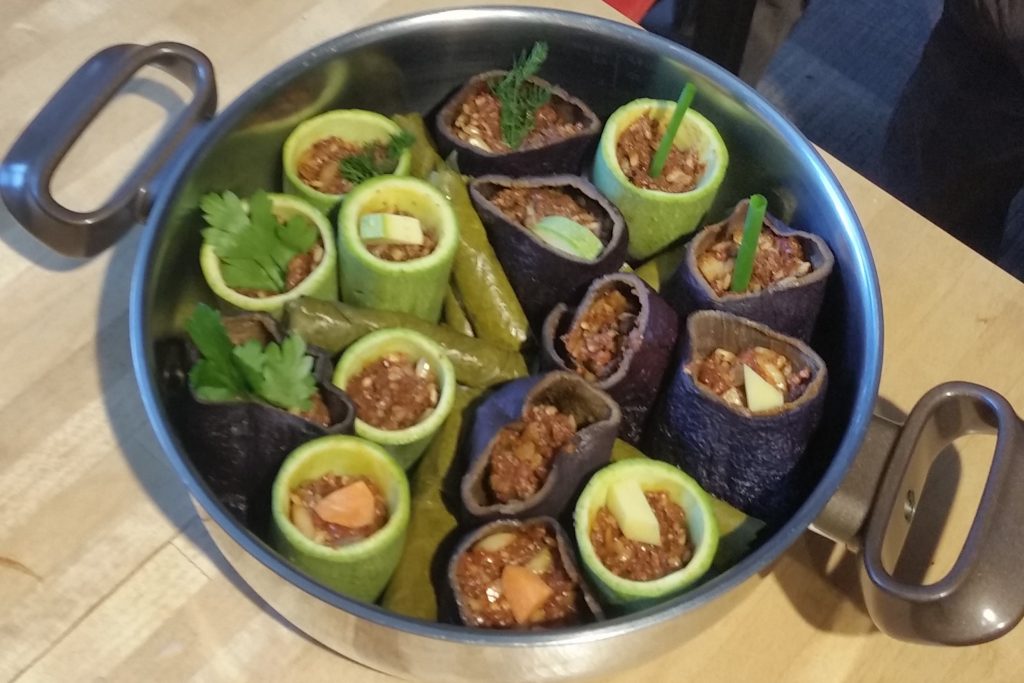I made this dip from Ottolenghi’s book, Jerusalem. We had it as part of a meal that included a hot bean and leek dish, some salmon, and bread. This was the best bit. The spices I got mail order from Seasoned Pioneers.
INGREDIENTS:
- 2 medium beetroot, about the size of a tennis ball
- 2 cloves of garlic, peeled
- 1 small hot red chilli, deseeded and finely chopped
- 250g Greek-style yoghurt
- 1.5 tbsp date syrup
- 3 tbsp olive oil
- 1 level tsp salt
- 1 tbsp za’atar spice mix
- 2 spring onions
- 15g toasted hazelnuts, roughly crushed.
- 60g soft goat’s cheese or sheep’s cheese, crumbled.
METHOD
- Wash the beetroot, and cook without peeling. I boil them in water for an hour, but you can also bake them for an hour in the oven.
- Once they are cooked and cooled, peel them and chop them roughly.
- Put the garlic, beetroot, chilli and yoghurt in a blender, and puree. I used a soup wand to do this.
- Mix in the date syrup, salt, olive oil and Za’atar.
- Transfer the mixture to a serving dish, and garnish with chopped spring onions, goats cheese and toasted hazelnuts. A drizzle of olive oil is good as well.
This is best served at room temperature, with bread.

